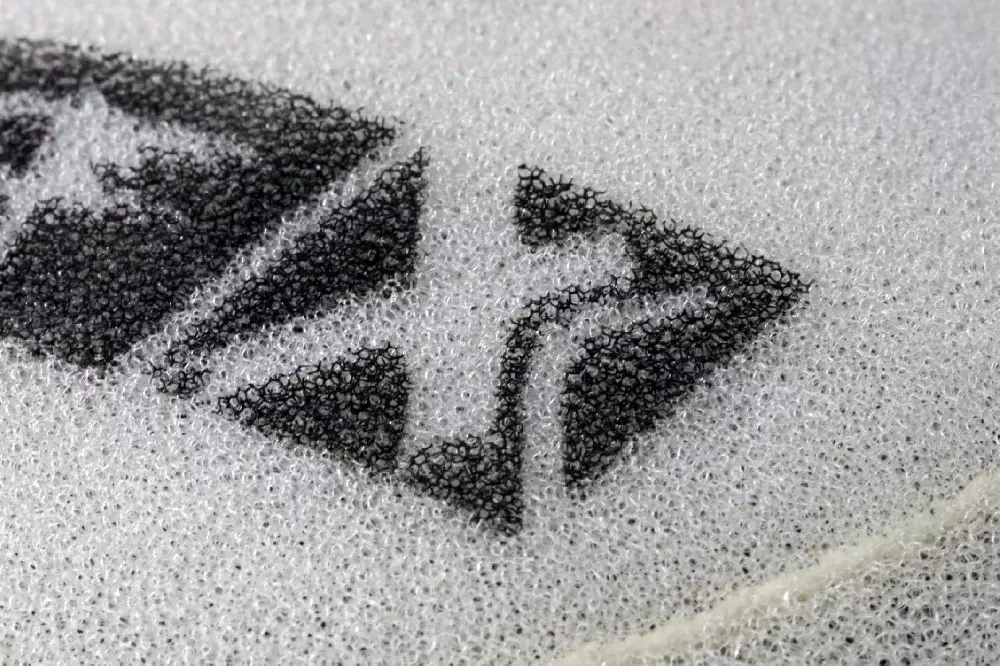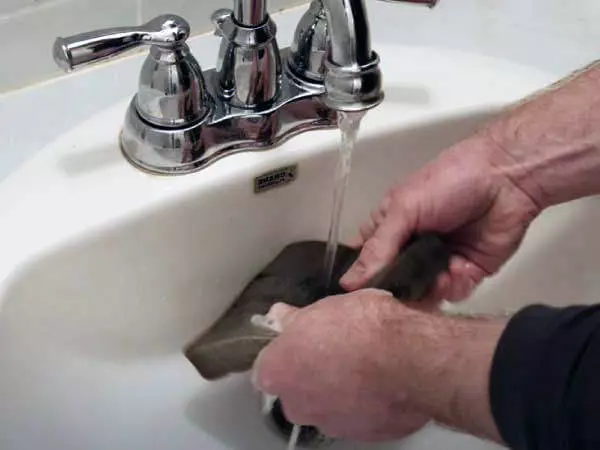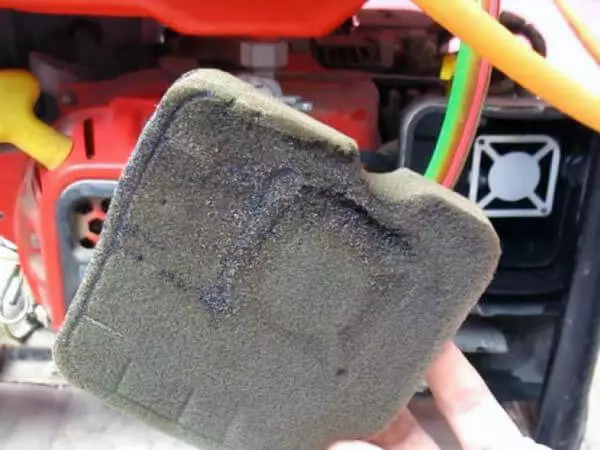How to clean generator air filter
2022-11-16
Table of content
How to clean generator air filter

Generator air filter
A generator's engine is its heart, and the air filter is its lungs. How can generators breathe unpolluted air without lungs?
Well, air filters need to be cleaned or replaced after a while to work correctly.
A clogged, dirty air filter can severely cut off fresh air flow to the carburetor, so you'll have problems with misfiring, black smoke, gasoline odor, black smoke, and more.
This article will show a step-by-step guide to safely cleaning your generator air filter and provide some preventative tips to protect your generator air filter from dust and debris.
Importance of cleaning air filters
An essential component of a generator's air-circulation system is the air filter.
They stop the engine from drawing in airborne dust and other debris that could otherwise clog important parts.
When air filters become dirty or damaged, they can lead to higher levels of hydrocarbons (HC) in exhaust emissions and increased particulate emissions. Also, clogged air filters can make it harder for air to get to the engine, which can lower the engine's performance and horsepower.
In the long run, if engine is running at optimum efficiency, you will spend a lot of money servicing your engine and buying more fuel than is necessary.
Tools needed to clean or replace the air filter
● A pair of protective gloves
● Kitchen towel
● Goggles
● A few drops of engine oil
● Detergent or dishwashing liquid
Safety precautions
● Read the user manual first.
● Turn off the generator.
● When the engine and other generator parts are hot, do not start work; leave it in a well-ventilated place for about an hour.
● Cigarettes, sparks, heat pipes, and other ignition sources should be kept away from the generator to avoid explosions.
● Remove the spark plug first.
How to clean the generator air filter?
Cleaning your generator's air filter isn't rocket science. You need 20-30 minutes on the task.
If you haven't read the user manual, please read it before following this guide.
1. Turn off the generator
If the generator is running for a long time, stop it and move it to a place with good ventilation so the engine and other parts can cool down.
2. Remove the spark plug
The spark plug needs to be removed in order to prevent the engine from accidentally starting.
To find out how to do this, consult the owner's manual.
3. Find the air cleaner box
You will find a black rectangular frame near the recoil housing. Release the clip and remove the air filter cover. Now carefully remove the air filter.
4. Check the condition of the air filter
Double-check the condition of the air filter and be sure to replace it if it is damaged or if you notice some foam particles or debris falling off. Foam filters are not expensive and will hardly cost you $5.
5. Clean the air filter

Clean the air filter
Clean the air filter with detergent or dish soap
If the air filter is in better condition, place it in pressurized water for a few seconds until dust and debris fall off. Apply the cleanser and wash gently.
Squeeze the cleaner with a soft towel, then rinse with pressurized water to remove any remaining cleaner particles.
Avoid the following things during cleaning.
● The air filter should not scratch or rub on rough surfaces
● Never use your fingernails to remove stains, or the foam chips will fall off
● Please do not hit it with walls to remove dust and grime
6. Apply engine oil on the filter
Be sure to pour some fresh oil on the side of the air filter facing the engine after the air filter becomes dry.
Make sure to squeeze out any excess oil with a clean towel. Engine oil should not drip from the air filter.
7. Connect the spark plugs and replace the air filter
Make sure to replace the oil filter in the air box and the oiled side is facing the engine.
Close the lid and secure the clip. Also, reconnect the spark plugs.
Congratulations, you have successfully cleaned the generator's air filter.
How often should I clean the generator's air filter?
It depends on what the generator is for and where you will use it.
It must be cleaned more frequently if it is to be used regularly or if the generator is placed in a dusty area. But on cleaner surfaces, it will require less cleaning.
You can find exact instructions and timeframes for cleaning the air filter in the owner's manual or at the top of the air box.
Most importantly, you must check the condition of the air filter after 2-3 weeks, and if it is dirty, be sure to clean it.
Other air filter cleaning techniques
The above procedure is suitable for a small generator for a home or RV. However, the large diesel generators used to power the entire house will use other cleaning methods, such as:
1) Pressurized water
Pressurized water with a maximum pressure of 40 PSI (276 kPa) can be used to clean the air filter. A nozzle should direct the water in an up-and-down motion onto the surface on the clean side of the filter. The dirty side of the air filter should then be cleaned using the same procedure as before.
Air should be used to dry things.
If hot air is required, make sure it doesn't go above 70°C (160°F).
Wash the air filter with water up to 6 times before replacing the filter. This is because it can damage filter media over time. Although you may notice some wavy pleats on the filter media, they can still be used this way.
2) Pressurized air (with or without vacuum)
This method uses clean, dry air to blow dust out of the air filter. The pressure used should not exceed 40 PSI (276 kPa), and the distance between the nozzle and the air filter surface should not be less than 2 inches (50mm).
Compressed air passes through the filter from the clean side. The blower's nozzle should move up and down the surface of the filter element as it blows the air opposite the nozzle. If there is a vacuum cleaner, it should be on the dirty side; it will suck in air and dirt.
Putting the nozzle too close to the filter medium can damage it and should be avoided.
3) Vacuuming
In this method, you should use a central vacuum supply or a standard shop vacuum supply. Then move the vacuum cleaner up and down on the dirty side, avoiding the nozzle of the vacuum cleaner coming into contact with the air filter surface.
4) Non-sudsing detergent
To use this method, you will first need to clean the air filter using any of the methods above. Then you can follow these steps:
Place the filter in a suitable water tank with the open end facing up at 37-60°C (100-140°F) and use a non-sudsing detergent.
Soak the filter for 15 - 30 minutes, and then gently swirl or shake the filter to agitate the dirt. After that, soak for another 10 minutes.
Rinse the filter with clean water sprayed from the clean side until the water runs clean. Air-dry it with air at a maximum temperature of 70°C (160°F).
Given the destructive nature of water-to-air filters, this process should not be done more than six times before changing the filter. Be careful not to completely immerse the air filter in the cleaning solution. The force of the water causes wavy folds, which is not a problem. Also, never reuse cleaning solutions.
Signs of a dirty air filter
1. Dirty Air Filter

Dirty air filter
Over time, the air filter can collect dust to protect the carburetor, fuel lines, etc. Check the air filter during the day after 2 to 3 weeks.
The air filter has a single solid colour, so clean it up if you notice any dust, debris, or off-white dust there.
2. Lesser runtime or lower fuel efficiency
If your fuel mileage is low, check the air filter, it may be due to insufficient fresh air being clogged by the air filter.
The carburetor requires a specific amount of oxygen to burn properly, so if the air filter is clogged, fuel efficiency will suffer.
An incorrect air-fuel ratio can cause your machine to burn more fuel or have incorrect combustion, resulting in a low average fuel and poor performance.
3. Generator engine misfires or misses
Because a dirty air filter blocks airflow, abnormal combustion occurs with an unbalanced air-fuel ratio, and the generator starts to miss or misfire.
Voltage-sensitive appliances are at risk of fire; be sure to pull the load as soon as the generator's speed has stabilized.
In the worst case, your generator might not even start if the air filter is choked/clogged.
4. Strange noise
If you notice intermittent strange noises and vibrations, check the air filter.
While the culprit of this problem is a contaminated spark plug, if the airflow is blocked, improper combustion can occur, causing the engine to start knocking.
5. Reduced horsepower
Since the air filter is the lungs of the generator, dirt or insufficient airflow will result in lower RPM; as the voltage fluctuates, you will get lower running/starting power.
Check your generator's air filter if it produces low RPM or keeps hiccups.
6. Releases black smoke from the exhaust
Suppose the carburetor is not getting a sufficient amount of air. In that case, the fuel may not burn properly, and some fuel will leak from the exhaust port as black smoke, which can damage your generators and appliances and the environment.
Also, unburned fuel can drip from the exhaust pipe and catch fire if it comes into contact with a hot exhaust pipe.
7. Strong fuel smell
Unbent or partially burned fuel can have a strong gasoline smell due to fuel leaking from the exhaust.
Note: When you smell a strong gasoline smell, check the entire generator and tank carburetor for leaks, etc.
Tips for keeping your generator's air filter safe from dust
● Place the generator in a clean place.
● If you are camping, place the generator on a rubber mat or a flat surface with less dust.
● If you live in a stormy or windy area, build a clean shelter for your generator.
FAQs
1) Should I oil the generator air filter?
Putting a few drops of oil on the air filter keeps debris and large dust particles out of the carburetor and fuel lines.
2) When should I replace the generator air filter?
It is necessary to replace the air filter immediately after 100 hours of operation because it is made of high-grade materials that cannot be used for a long time.
3) Can a generator run without an air filter?
Yes, but don't try it because the air filter stops dust and debris from entering the engine and fuel lines, and if you were to run the generator without an air filter, you could face the following consequences.
- Damage to internal lines, pistons, cylinder walls, carburetors, etc.
- Poor engine performance
- Excessive emissions of hydrocarbons
- Excessive fuel consumption
- Engine failure in the worst case
Conclusion
Cleaning the air filter can prevent problems such as fire, abnormal noise, and black smoke and prolong the generator's life.
To avoid enormous maintenance costs, every user must clean the air filter after a specific time.
We hope you can now clean your generator's air filter in less than 30 minutes.
